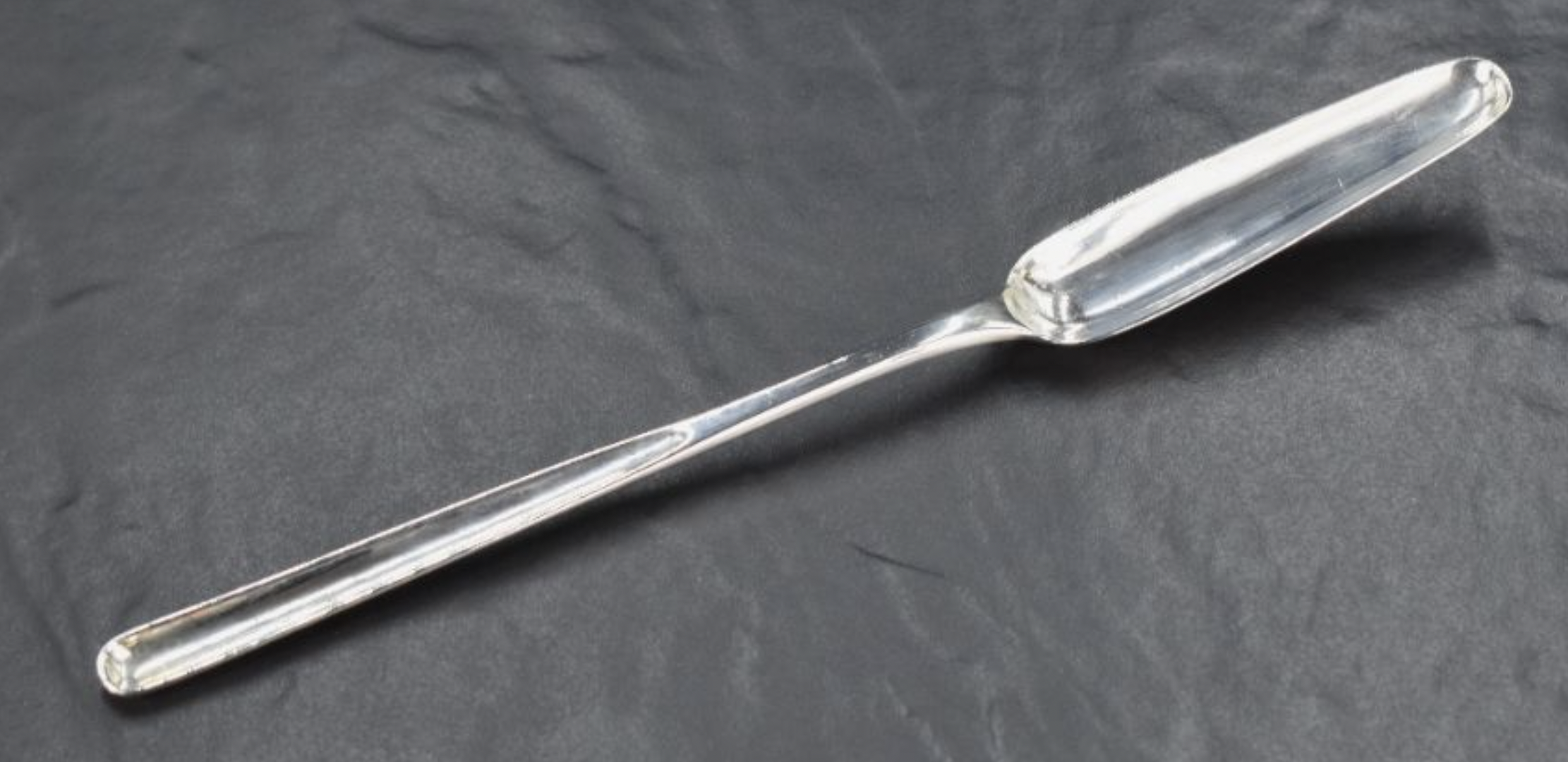Marrow spoons were created in the late 17th century, with the typical rounded spoon bowl at one end and a thinner gulley at the other, which was used to remove marrow from bones.
This related to table etiquette changes and refinement, as these spoons allowed the marrow to be removed and eaten much more tidily. By the end of the 18th century, these spoons had essentially been replaced by marrow scoops, thereby removing the spoon aspect of the utensil.
A somewhat striking utensil that often raises the question ‘What is it?’, the marrow scoop is specially designed in one of two ways. One type has a broader gulley at one end, a thinner gulley at the other, and a plain centre. The other type has a single gulley at one end, which is easier to handle.
However, the double gulley scoops allowed marrow to be removed from large and small bones. Bone marrow was considered a delicacy in the Georgian period, and during the 18th and 19th centuries, the marrow scoop was produced in large quantities. The scoops were produced in silver because silver is stronger than wood or other metals and to match the silver tableware used by the upper class.
For collectors, marrow spoons and scoops hold a special allure. The most sought-after pieces are the earlier ones, those with rare patterns, unique spoon sizes, and examples from Scottish Provincial and Irish origins.
In a previous sale, we had a Queen Anne silver marrow scoop of traditional design with later engraved initials M.F., marks for London 1709, and makers’ mark for Henry Greene, which sold within the estimate.
We have a personal collection of marrow scoops listed in our Silver and Silver Plate 3 auction—something well worth looking out for.

